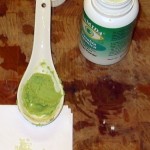Note: This entry has been restored from old archives.
I’m putting this info online because in almost a year of sporadic searching for something definitive I found no useful answer to the question “Is is possible to switch from a Working Holiday visa to a Dependant (unmarried partner) visa whilst within the UK?”.
Note that this info is correct at this time (2007-04-18) but immigration law changes often.
So, the initial situation: I’m in the UK on a 5-Year (expiry in 2011) Work Permit visa sponsored by my current employer. At the time I got the visa Kat, my “unmarried partner”, and I did not have the required 2 years worth of documentation to prove we were partners (not required if you’re married or in a registered civil partnership). Thus Kat got a Working Holiday visa (2 years, work limited to 12 months) and she entered the UK on that, I on my Work Permit visa.
The drawbacks of this situation:
- I’m tied to working for the sponsor company (no immediate problem, but I’m planning ahead years).
- Kat’s visa is only 2 years and has work restrictions.
- After months of effort the Working-Holiday visa has proven a major roadblock to Kat’s attempt to get a decent developer job. One can always work in bars, yay, though the Poms haven’t got around to banning smoking yet (soon!:) so that’s kind of ruled out too. Kat should have trained up as a barista!
The obvious solution is for me to get an HSMP visa (no problem) and Kat to get a dependant visa (we were a bit worried about our patchy documentation, but this was no problem in the end). The main logistical drawback is that, in all our reading and even in phone-advice from the UK Work Permits office, it seemed Kat could only change her visa back in Australia. A process that’d take at least 4 weeks and require my passport (with the only workable solution being: I get my HSMP visa now, Kat stays in .au after our visit later this year, on my return to the UK I post her my passport from the UK, she applies for the dependant visa (AU$225), then gets to the UK ~5 weeks later).
It turns out that all the information we found, and even the initial advice received direct from the Work Permits department helpline, was wrong.
With my HSMP approved (a £315 process) it was time to do that actual visa step FLR(HSMP) to transfer your visa. You do not need to resubmit all the proof documents for (a £335 process — UK visas aren’t cheap). In filling out this form I noticed that there was no clauses that barred me from including Kat as a dependant unmarried partner. Curious about this I gave the Work Permits people another call and asked a more specific question: “I’m in the UK on a Work Permit and my unmarried partner is in the UK on a Working Holiday, can I include her in my FLR(HSMP) as a dependant?”. The answer: YES!
So this is what I did. Posting Work Permits the FLR(HSMP) with our passports and my HSMP docs in one 0.3mm thick folder and the “unmarried partner” proof documents in a 2.5cm thick folder (2 years is a lot of bills and bank statements).
Today, after a tense 4 weeks, our stuff came back complete with fresh UK residency visas (2 year, expiry in 2009, then we can simply get FLR renewals — after 5 years who knows, citizenship?).
One less thing on my worry-list. YAY. And we saved AU$225!
Unmarried Partner Documents
As an addendum the diagram here shows the documentation we provided the Work Permits department with to prove our relationship had “subsisted for at least two years”. We also provided a cover letter that gave a “brief history of us” type of summary.
A chart was knocked up using the Gantt Chart template in Visio, it worked rather well I thought. As much as we like to hate them, Microsoft do good diagramming and spreadsheet software — I have yet to find competitive OSS alternatives to these (though OpenOffice Calc is certainly getting there on the Excel front, I think it’s the charting that’s holding it back at the moment).
HSMP Documents
There isn’t much to say here. The documentation requirements for the HSMP are very clearly spelled out. I submitted original pay slips, ATO tax statements and bank statements for financial proof (and also UK work experience proof, since half the payslips were for the UK). For proof of qualification I submitted my original University of Sydney degree certificate and a letter from the University confirming my degree and also that it was taught in English (it is essential to have the English language proof, if you contact the USyd student services department they’ll look after this for you. Very efficiently in my experience! I assume other Universities will provide similar letters). Given my income, experience and qualification were sufficient for the HSMP this is all I needed, in addition to all the usual identity/age/etc proof.
You need this documentation to get an HSMP approval letter. Then, if you’re already in the UK, you submit an FLR(HSMP) to transfer your visa. You do not need to resubmit all the proof documents for this. However if you’re submitting an FLR(HSMP) for the second time (after your initial 2 year FLR(HSMP) period has expired) then you do need to submit all the HSMP proof documentation (but don’t have to go through the HSMP approval stage again, just the FLR). The FLR(HSMP) forms and guidance all clearly spell out the requirements for this.
Personally I don’t think the, typically rather expensive, services that do the paperwork for you are worthwhile. The most difficult thing is assembling the required documentation (and for HSMP this is simple compared to the unmarried partner proof) and using an agent wont make this part any easier. So you’re paying a lot of money for the services of an experiences form-filler. The main advantage you’ll get is that they’ll do it right and will probably have a clear idea whether or not you really qualify. Since the HSMP consideration fee is £315 and the visa transfer fee is £335 getting something wrong can be rather expensive!








